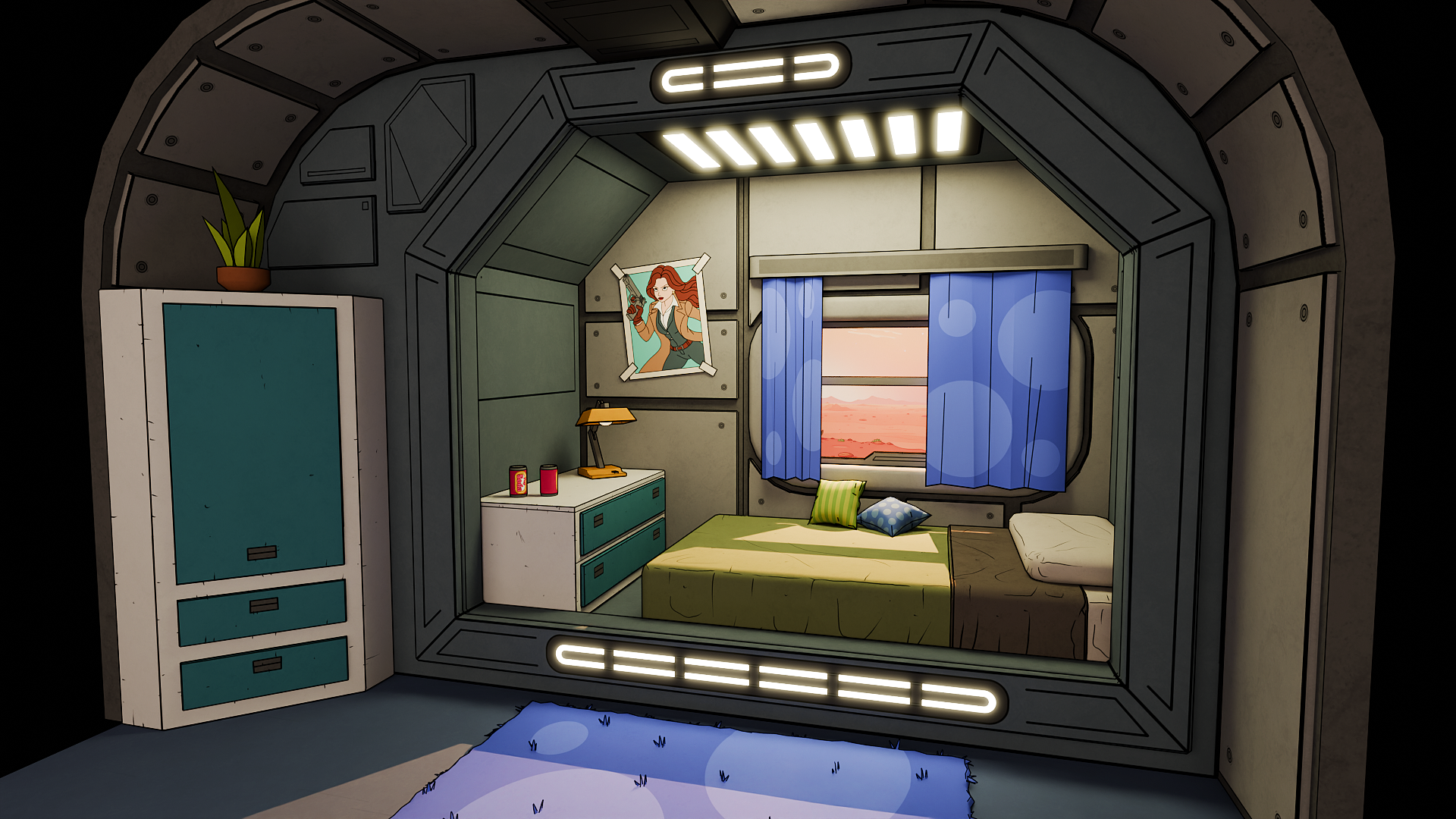BedRoom Space Base - Cartoon Style
Stylized sci-fi bedroom with cartoon shading. Includes bed with pillows, wardrobe, rug, chest of drawers with lamp and beer cans, wall poster, and window with curtains showing an outer space view. Uses only Base Color texture for a clean, flat-shaded look. Optimized for real-time engines with clean topology and UV mapping. Ideal for stylized or futuristic environments in games, VR, and animation.
Info and Download: https://www.patreon.com/pizzaandgames/shop/bedroom-space-base-cartoon-style-2123504?source=storefront
#scifi #3dmodel #futuristic #cartoon #stylized #gameready #gamedev #bedroom
Stylized sci-fi bedroom with cartoon shading. Includes bed with pillows, wardrobe, rug, chest of drawers with lamp and beer cans, wall poster, and window with curtains showing an outer space view. Uses only Base Color texture for a clean, flat-shaded look. Optimized for real-time engines with clean topology and UV mapping. Ideal for stylized or futuristic environments in games, VR, and animation.
Info and Download: https://www.patreon.com/pizzaandgames/shop/bedroom-space-base-cartoon-style-2123504?source=storefront
#scifi #3dmodel #futuristic #cartoon #stylized #gameready #gamedev #bedroom
BedRoom Space Base - Cartoon Style
Stylized sci-fi bedroom with cartoon shading. Includes bed with pillows, wardrobe, rug, chest of drawers with lamp and beer cans, wall poster, and window with curtains showing an outer space view. Uses only Base Color texture for a clean, flat-shaded look. Optimized for real-time engines with clean topology and UV mapping. Ideal for stylized or futuristic environments in games, VR, and animation.
Info and Download: https://www.patreon.com/pizzaandgames/shop/bedroom-space-base-cartoon-style-2123504?source=storefront
#scifi #3dmodel #futuristic #cartoon #stylized #gameready #gamedev #bedroom
0 Yorumlar
·0 hisse senetleri












